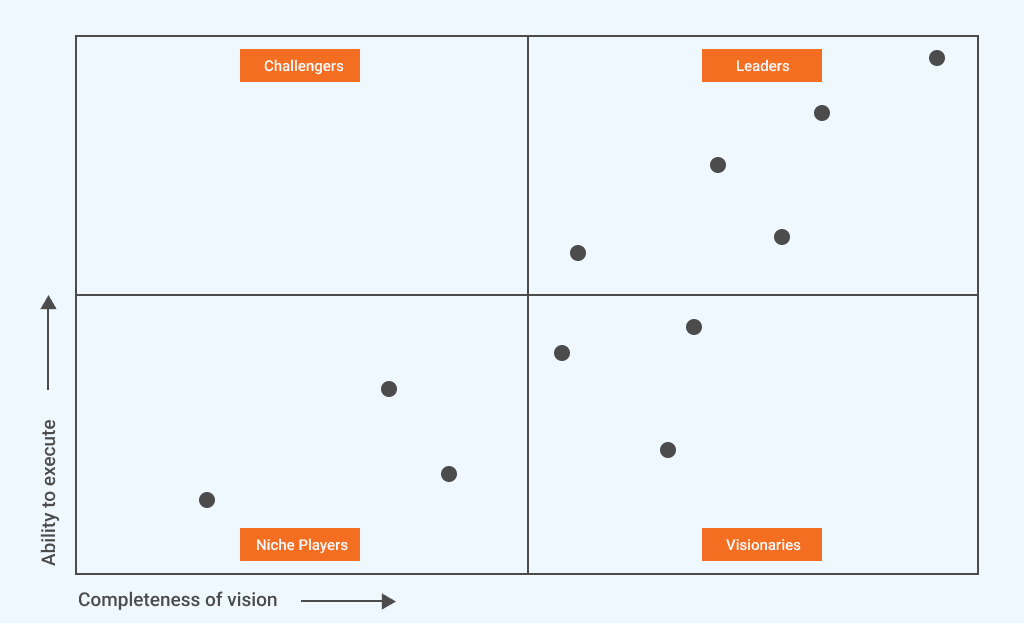The current paradigm for firms in the marketplace is the constantly shifting market conditions and the necessity for ongoing innovation. Adapting to these via legacy app development may take longer than you anticipate. It is because the modernization process can be time-consuming and sequential.
As a result, many businesses play catch-up to keep up with changing customer demands.
The Need for New Solutions
Conventional software development has followed a “waterfall” approach, in which the program is built in stages, and specialized roles with extensive technical knowledge are required.
However, this architecture is becoming increasingly obsolete in the face of continuously changing business needs. Both programmers and consumers want a method that promotes accessibility, communication, and responsiveness to changing expectations.
Therefore, organizations are working hard to modernize their businesses to stay ahead of the competition and boost efficiency. This type of transition can be difficult since it requires business executives to change entire business strategies and implement new technology across the board.
Progress is divided, as one might anticipate. Many executives know their desired improvements but are unsure which tools or technology to employ.
Others have already automated particular scenarios using advanced technologies such as artificial intelligence (AI), machine learning (ML), and robotic process automation (RPA).
However, these seeming accomplishments frequently fall short because they neglect a key corporate strategy concept: to keep these systems unified and apply them in succession.
Low-code software, which provides powerful technologies like hyper-automation and AI that can be applied with minimal programming experience, makes it much easier to attain this goal. This democratization of digital creation can empower corporate leaders and speed up the digital transition process.
But what exactly is this Low Code?
Low-code is defined as the ability to visually design new business apps with less hand-coding – when your engineers can do more of greater value, quicker. Low-code refers to an app development technique that employs function sets rather than raw code.
These function sets behave like creating bricks, allowing anyone with little programming skills to create apps by combining prefabricated sets. Low-code coding is most frequent in products and cloud services, and it’s utilized for application development with visual and declarative programming approaches.
Enterprise low-code programming or development makes it easier to create enterprise-grade applications and operating systems that support thousands of users and run essential business operations. These Low Code/ No Code Platforms & apps can be connected with cloud services and other apps, resulting in a larger ecosystem.
Because corporate low-code options don’t require much coding, they can expedite, automate, and streamline the app development process while saving money and increasing productivity.
Low-code development tools allow nearly anyone to create applications, so businesses no longer need to recruit software developers. Low-code development is a great start for businesses towards modernization.
Becoming successful in digital transformation may require a wide range of new processes, advanced technologies, low-code development, and much more. The epidemic of COVID-19 has raised the demand for businesses to automate procedures and prioritize digital transformation projects.
Low-code platforms fill this void by streamlining workflows and speeding up automation projects. According to Gartner, the global market for low-code development solutions would grow by 22.6 percent in 2021, reaching USD 13.8 billion.
According to the recent Magic Quadrant Report, over 50% of medium to big organizations are expected to adopt a low code application platform by 2023.

Low Code vs. No Code Platforms
Low Code/ No Code App Development platforms are visual application development frameworks that let corporate, and citizen developers drag and drop application components, link them, and build mobile or web apps.
Even though Low Code Automation platforms cater to professional and citizen developers, they may require some coding abilities. Low-code application platforms are therefore predominantly used by full-time and part-time developers. On the other hand, no-code products are designed exclusively to construct custom apps without opting for specialist development abilities.
A no-code development platform (NCDP), similar to low-code, enables users to construct enterprise apps using drag-and-drop interfaces rather than traditional hand-coding programming. Low Code No Code Platforms are designed to speed up process automation and scalability across several processes.
Benefits of the Low Code No Code Automation
Before business low-code, corporates relied on lengthy spreadsheets, which resulted in unproductive team collaboration, trouble discovering, sharing, and updating critical data, and inefficiencies and errors in workflow operations. Low Code/ No Code solutions have several advantages for organizations that have used them, including:
1. Democratized App Distribution
Low-code disrupts conventional business and IT silos by allowing IT departments and people with little technical experience to collaborate closely and deliver their applications.
2. Efficient App Development
According to Forrester, corporate low-code platforms may help companies create new apps 6 to 20 times faster. These platforms simplify and expedite app development while reducing the IT project backlog.
3. Cost Savings
Because of pre-built features, business low-code no code requires minimal time and resources to construct high-quality apps, and current resources can be reused multiple times without trouble.
4. More Flexibility and Speed
These platforms also give non-IT experts better problem-solving skills, allowing regular people to design corporate apps that help them accomplish their tasks more rapidly and effortlessly.
Development teams can benefit from these platforms to build apps for commodity purposes and modify them later to add more brand value. They can invest extra time developing unique apps or working on other efforts that differentiate their companies. Thanks to these platforms, professional developers have also been excused from laborious programming tasks.
Find out How Ignatiuz Helps in Enhancing Productivity
Companies must adopt a complete digital transition model incorporating modern technology, people, and information to succeed in the demanding new corporate world.
Organizations must realize that one innovation and many stand-alone products will not solve their entire business problems. Through business low-code no-code development solutions, enterprises may accomplish end-to-end digital transformation, conquer challenging hurdles, and fully optimize any given process by implementing a unified platform.
Low-code no-code modernization is powerful in and of itself. However, the two actions are required to enhance productivity. Discovering opportunities for low-code no-code modernization and collaborating with the Best Low Code/ No Code Platform, the one having a record of customizing modernization solutions to meet the demands of clients.
Ignatiuz is a modern software solution provider for web development and web security demands. With Ignatiuz, you can give your business a competitive edge with the company’s interactive digital solutions.
With the IT services we provide, you can further improve your business operations and add substantive value to your company. Ignatiuz caters to understanding your unique business needs and recommends the right tools to help you succeed and stand out among your competitors.
With Ignatiuz modernization solutions, you can maximize time, be increasingly productive, and stay a step ahead of your competition. Contact us at: https://stage.ignatiuz.com/contact-us/
